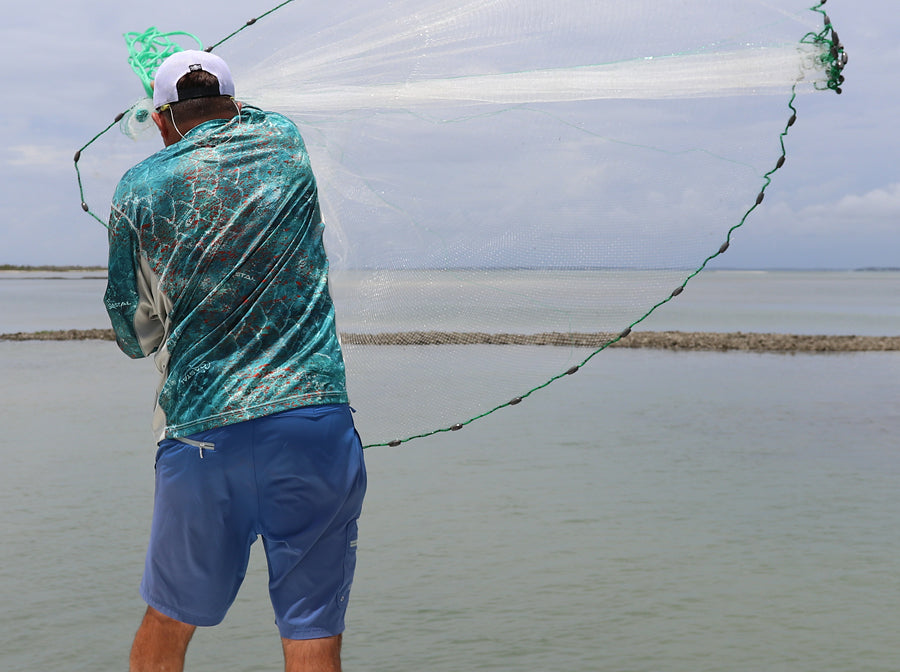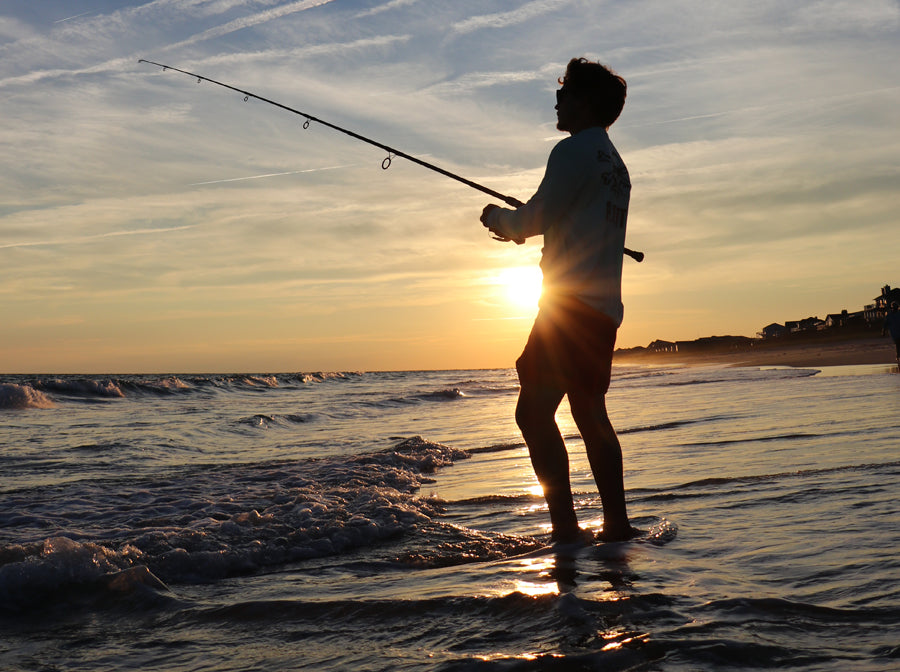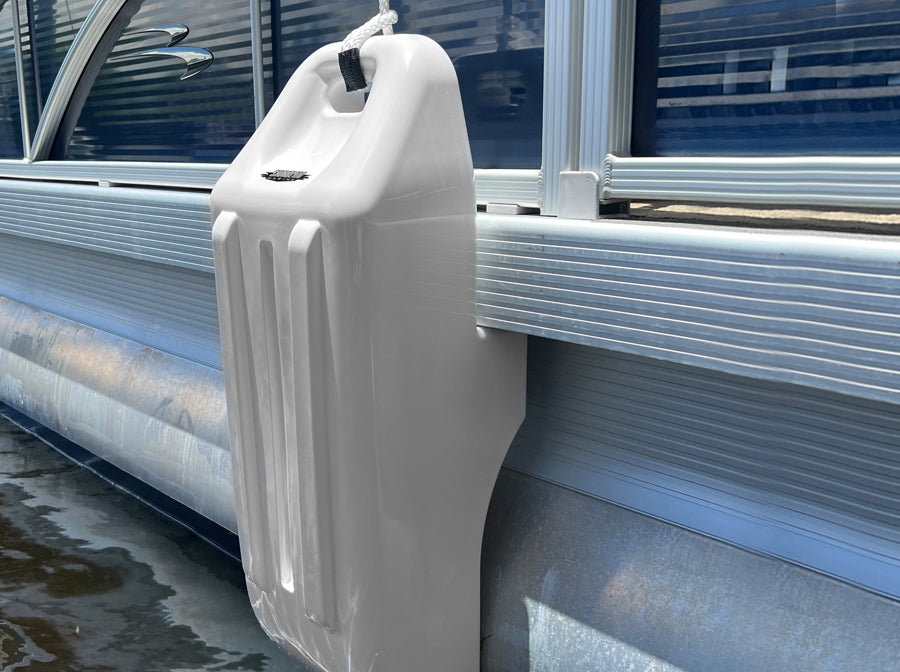From freshwater shiners to saltwater pogies, live baiting offers a time-tested method for catching a variety of fish. Wetting a hook with minnows and other baitfish can be fun for all ages, and rigging live bait is usually a simple affair. Using a cast net, you can easily fill a bucket or livewell with enough fresh bait for a fishing trip.
Throwing a cast net is relatively easy—and makes a great activity for youth anglers. Learning how to throw a small cast net takes only a few minutes of practice in the backyard. If you’ve never caught baitfish using a cast net, now’s the perfect time to give it a try. To help you get started, we’ve created this guide that includes step-by-step instructions for throwing the perfect cast net.

Learning how to throw a cast net is easy for anglers of all ages.
Cast Net Construction
Traditional cast nets are affordable and can be found in most bait and tackle shops and on our website. Cast nets can vary in construction, size, and materials, but they all include:
Mesh Netting: Most cast nets are constructed with monofilament or nylon netting. Anglers usually prefer monofilament cast nets because they:
- Don’t absorb water like nylon nets
- Sink faster, trapping more bait inside
- Are less visible in the water, less likely to spook baitfish
Handline/Throw Line: The cast net handline has a loop on one end that attaches to your wrist. The handline is used to help control the net during the throw, and to retrieve the cast net afterward.
Cast Net Horn: The plastic circle at the top of the net holds the braille lines together. Cast net horns can be open inside or contain dividers that separate the braille lines.
Braille Lines: When retrieving the cast net, braille lines pull the net closed to keep the bait from escaping. Braille lines are connected at the top to the handline, at the bottom to the lead line and run through the netting. A cast net swivel between the braille lines and handline helps prevent twisting.
Lead Line: This rope attaches several weights to the outer diameter, or bottom, of the net.
Cast Net Weights: Attached to the lead line along the outer diameter of the net, weights make the net sink faster after it lands on the water. Lighter cast nets—and nets with smaller mesh—sink slower than heavier nets, and nets with larger mesh.

When thrown correctly, a cast net will open into a pancake shape.
How a Cast Net Works
If thrown correctly, a cast net will fully open into a large pancake shape while still in the air. When the net lands on the water, it sinks and traps baitfish that are underneath. Hauling in the handline pulls the braille lines and lead lines, closing the bottom of the net and trapping the bait inside. Once the net is back in hand, a quick pull up on the horn releases the bottom of the net so you can remove the baitfish.
Cast Net Radius and Diameter
Cast nets are measured by their radius—half their diameter size when fully opened. A three-foot cast net, when thrown correctly, will open to a six-foot diameter. A four-foot cast net will open to eight feet in diameter, and so on.
Best Cast Net Size for Beginners
The old fishermen standing around the local tackle shop may advise you to buy the biggest cast net that you can find. However, larger cast nets are more difficult to throw—especially for beginners. It’s much easier to learn how to properly throw a cast net using a three-foot or four-foot model.
INSTRUCTIONS FOR THROWING A SMALL CAST NET
Step 1: Ready the Cast Net
A tangled cast net will not open properly, so check the net to make sure there are no twists or tangles. Pick the net up by the horn and shake it a few times to remove any tangles or debris.
Step 2: Load the Handline
Place the handline’s loop around the wrist of your throwing hand. The wrist loop should be snug and secure to prevent losing the net in the water.
Coil the handline loosely, forming foot-long loops. Hold the coiled handline in your throwing hand. Make sure the handline doesn’t have any knots or tangles.
Note: Your throwing hand is usually your dominant hand.
Step 3: Load the Net
Grip the net below the horn using your throwing hand. You should have both the coiled handline and the net in your hand.
Tip: To shorten the net, fold it once a foot or so below the horn. Hold both sides of the net below the fold in your throwing hand.

One throw of a cast net can land enough bait for the day.
Step 4: Load the Weights
Reaching under the net where the weights are dangling, grab the lead line using your free hand. Lift it up to shoulder height and then hold it away from you on that same side. Keep that elbow bent. Next, reach down and grab a remaining, low-hanging section of the lead line with your throwing hand and hold it away from you in the opposite direction.
Step 5: Throw the Cast Net
Position your body sideways so that your offhand shoulder is pointing to your target and your throwing hand shoulder is pointing away from your target.
Using a circular motion—imagine a dancer swirling a long skirt—swing the net around and toward the target. Release the net upward over the target. When thrown correctly, the net will resemble a “pancake” as it opens into a perfect circle.
Watch Our How To Throw a Cast Net Video
Practice Makes Perfect
Before you head to the water in search of live bait, practice throwing a cast net in your backyard. A few minutes of practice will reward you with “pancake” throws every time.
More Resources
Fishing Knots for BeginnersGuide to Picking the Best Fishing Line
How to Pick the Best Lure Color for Freshwater Fishing
The One that Got Away: Six Ways that Anglers Lose Fish
Fisherman’s Guide to Pliers
How to Spool a Fishing Reel
Essential Fishing Tools for Your Tackle Box
Strategies to Optimize Your Fishing Tackle Storage



